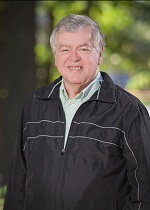Subcentimeter Laser Ranging and Its Applications
Hosted By: Laser Systems Technical Group
05 April 2022 14:00 - 15:00
Eastern Time (US & Canada) (UTC -05:00)In this webinar hosted by the Laser Systems Technical Group, John Degnan will provide an overview of Subcentimeter Laser Ranging technology and its scientific contributions. Today, under the auspices of the International Laser Ranging Service (ILRS), a global network of over 30 Satellite Laser Ranging stations routinely track a huge constellation of artificial satellites up to geosynchronous altitudes.
The ILRS supports a wide variety of scientific and engineering studies including: global laser time transfer and relativity experiments, the Earth's gravity field and center of mass, tectonic plate motion and regional crustal deformation, polar motion and length of day, etc. Precise tracking of certain satellites, which host microwave or laser altimeters, can further provide highly accurate measurements of terrain elevation, ice accumulation, sea level and ocean currents, and seafloor topography. A few of the larger ground telescopes also track retroreflectors placed on the Moon by US and Soviet landers.
Ranging beyond the Moon, however, requires larger telescopes and/or greater laser pulse energies due to a 1/R^4 range dependence of signal strength. However, if one utilizes a two-way laser transponder technique, the signal strength varies only as 1/R^2 and allows precision time transfer and ranging over interplanetary distances with modest spaceborne laser energies and telescope apertures. This was demonstrated by pointing the NASA Mars Orbiter Laser Altimeter (MOLA) toward a NASA ground Station and exchanging laser pulses over an 80 million km distance.
Subject Matter Level: Intermediate - Assumes basic knowledge of the topic
What You Will Learn:
- An overview of subcentimeter satellite and lunar laser ranging technology, and its science and engineering applications
- How satellite laser ranging enhances the accuracy and applications of spaceborne microwave and laser altimeter measurements
- An introduction to two-way laser transponders, which extend precise ranging and time transfer over interplanetary distance
Who Should Attend:
- Researchers interested in the applications of satellite ranging technology such as relativity, global time transfer, subcentimeter satellite positioning, gravity fields, geophysics, climate change effects on sea level, land and ice topography, bathymetry, interplanetary ranging and time transfer, etc.
About the Presenter: John Degnan, Independent Technical Consultant
 Dr. John Degnan is presently a semi-retired Independent Technical Consultant following a 38 year Civil Service career at NASA Goddard Space Flight Center (GSFC) in Greenbelt, MD (1964-2003) and a subsequent 16 year career as Chief Scientist at Sigma Space Corporation in Lanham, MD (2003–2018). Supervisory positions at GSFC included Head, Advanced Electro-Optical Instrument Section; Deputy Manager, NASA’s Crustal Dynamics Project; and Head, Space Geodesy and Altimetry Projects Office. From 1988 to 1992, he also served as a Distinguished Adjunct Professor of Physics at The American University in Washington DC where he taught a two semester graduate course in Quantum Electronics. Dr. Degnan is a Fellow of Optica.
Dr. John Degnan is presently a semi-retired Independent Technical Consultant following a 38 year Civil Service career at NASA Goddard Space Flight Center (GSFC) in Greenbelt, MD (1964-2003) and a subsequent 16 year career as Chief Scientist at Sigma Space Corporation in Lanham, MD (2003–2018). Supervisory positions at GSFC included Head, Advanced Electro-Optical Instrument Section; Deputy Manager, NASA’s Crustal Dynamics Project; and Head, Space Geodesy and Altimetry Projects Office. From 1988 to 1992, he also served as a Distinguished Adjunct Professor of Physics at The American University in Washington DC where he taught a two semester graduate course in Quantum Electronics. Dr. Degnan is a Fellow of Optica.
